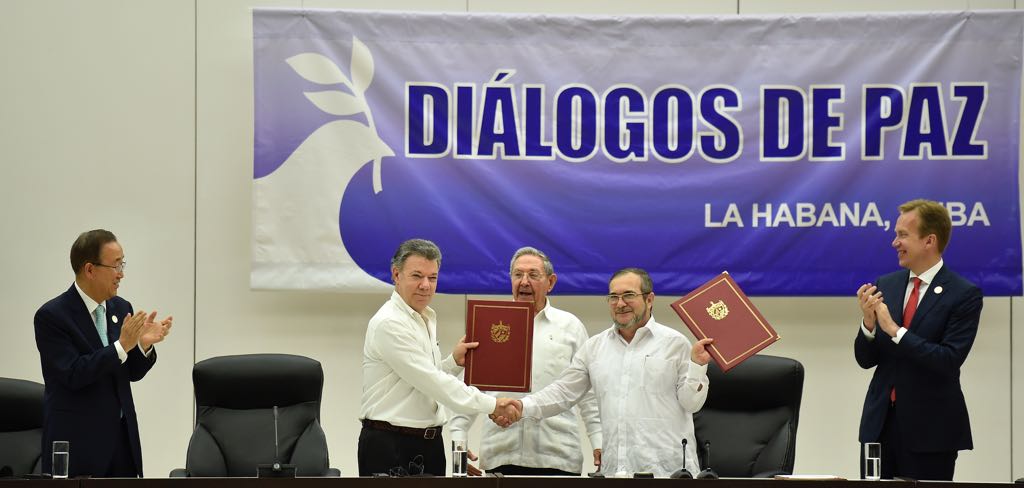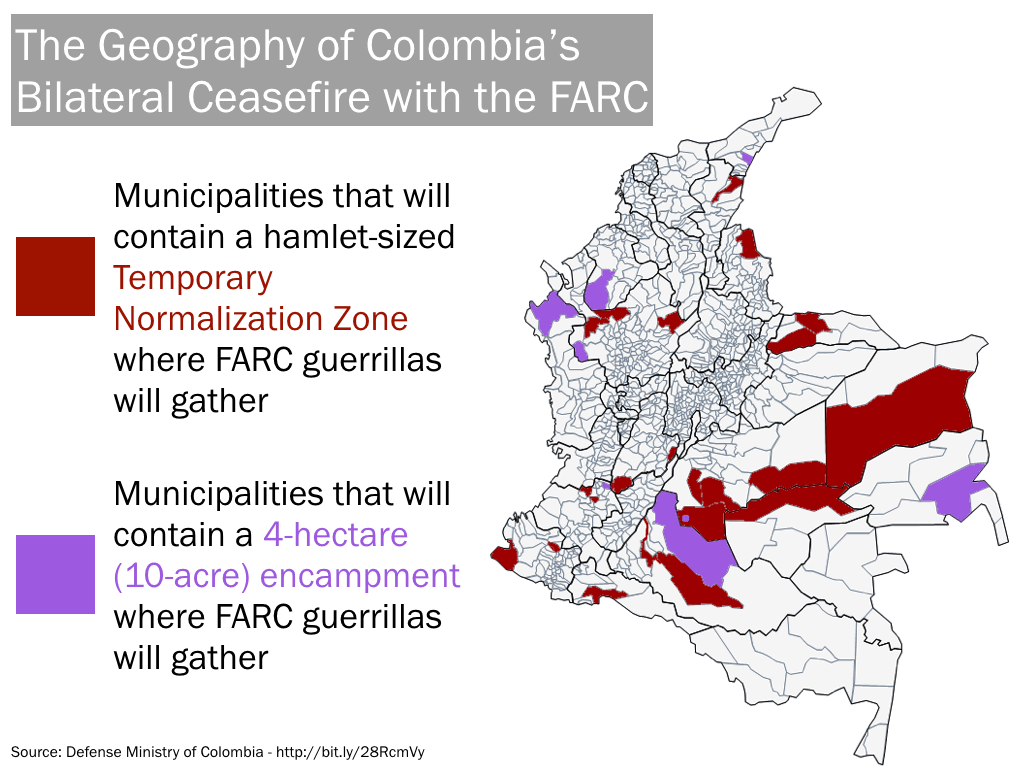The Joint Communiqué

Statement of chief government negotiator Humberto de la Calle
Surely the accord we’ve achieved isn’t a perfect accord. But with the same honesty and frankness with which we’ve informed public opinion, now I want to make clear that I have the certainty that it is the best possible accord. We all probably would have wanted something more. We here at the table would have wanted something more. But the accord achieved here is the viable accord, the best possible accord.
…
Many Colombians would want punishment for the FARC. But also, with the same fervor, we would have to ask the same punishment for all responsible. State agents who deviated from their mission, and third parties who financed serious crimes and massacres. The violence of the other cannot justify one’s own violence. With the application of transitional justice, and with the launching of mechanisms for truth and reparations, what is sought is that this society may understand that there is no such thing as “good violence.” That the only legitimate reaction against crime is the democratic power of the state. That straying beyond this path brings the unleashing of violence that feeds on itself and perpetuates the confrontation. Non-repetition is something that we demand of the FARC with firmness. But this should also be a great national commitment. Nobody in the future should encourage forms of the poorly named “private justice.”
…
In the regular justice system, punishment plays a dissuasive role. The sanctions foreseen in the accord have, instead, a great restorative content. …Many victims wish to heal their wounds, know the truth, and see those responsible admit their guilt. The sanctions contemplated in the Special Justice system fulfill this purpose. It is a case without precedent that, in the middle of a conflict in real time, the antagonists could achieve an accord to punish the most serious crimes.
…
I thank those who have expressed reservations and criticisms. This is a legitimate exercise. It has also been useful for us at the table. They are not enemies of peace. The enemies of peace are those who have filled social networks with fallacies and myths.
Statement of chief FARC negotiator Iván Márquez
Regrettably, in all wars, but especially in those of long duration, errors are committed and the population is involuntarily affected. With the signing of the peace accord, which implicitly brings the commitment of non-repetition, we hope to dispel, definitively, the risk that weapons may again be used against citizens.
…
To the government of the United States that for so long supported the state’s war against the guerrillas and against social inconformity, we ask that it keep supporting, in a transparent way, Colombian efforts to re-establish peace, always expecting from Washington humanitarian gestures that coincide with the kindness that characterizes the majority of the American people, friends of concord and solidarity. We continue to await Simón Trinidad.
We hope that the ELN may find its own path, so that the peace that we long for may be completed fully, and in so doing involving all Colombians.
President Juan Manuel Santos
Mothers should not bury their children.
Our children, our campesinos, our soldiers, should not keep suffering the mutilations of antipersonnel mines.
We don’t want more young people as cannon fodder in an absurd and painful war.
We Colombians have the right to recover hope in a better future.
With this accord we will stop being viewed as a dangerous country, and more investment, more tourism, and more employment will come.
With this accord I leave in your hands the opportunity to end the war with the FARC.
…
The former members of the FARC—now without weapons—may gain access to the nation’s political life, in democracy. They must, just like any partisan organization, convince citizens through proposals and arguments in order to be elected.
Until 2018 they will have some spokespeople in the Congress, with voice but without a vote, to discuss only issues related to the implementation of the accords.
Starting at that moment, they will participate in elections with a minimum representation assured for two congressional terms, if they do not achieve the minimum necessary vote.
August 25, 2016


 Note: this post reflects our current understanding of the plebiscite situation, which is very complex and hinges on details of Colombian law. We may revise the text; if we do, we will indicate all revisions clearly. Any revisions suggested in the comments will receive serious consideration.
Note: this post reflects our current understanding of the plebiscite situation, which is very complex and hinges on details of Colombian law. We may revise the text; if we do, we will indicate all revisions clearly. Any revisions suggested in the comments will receive serious consideration.








